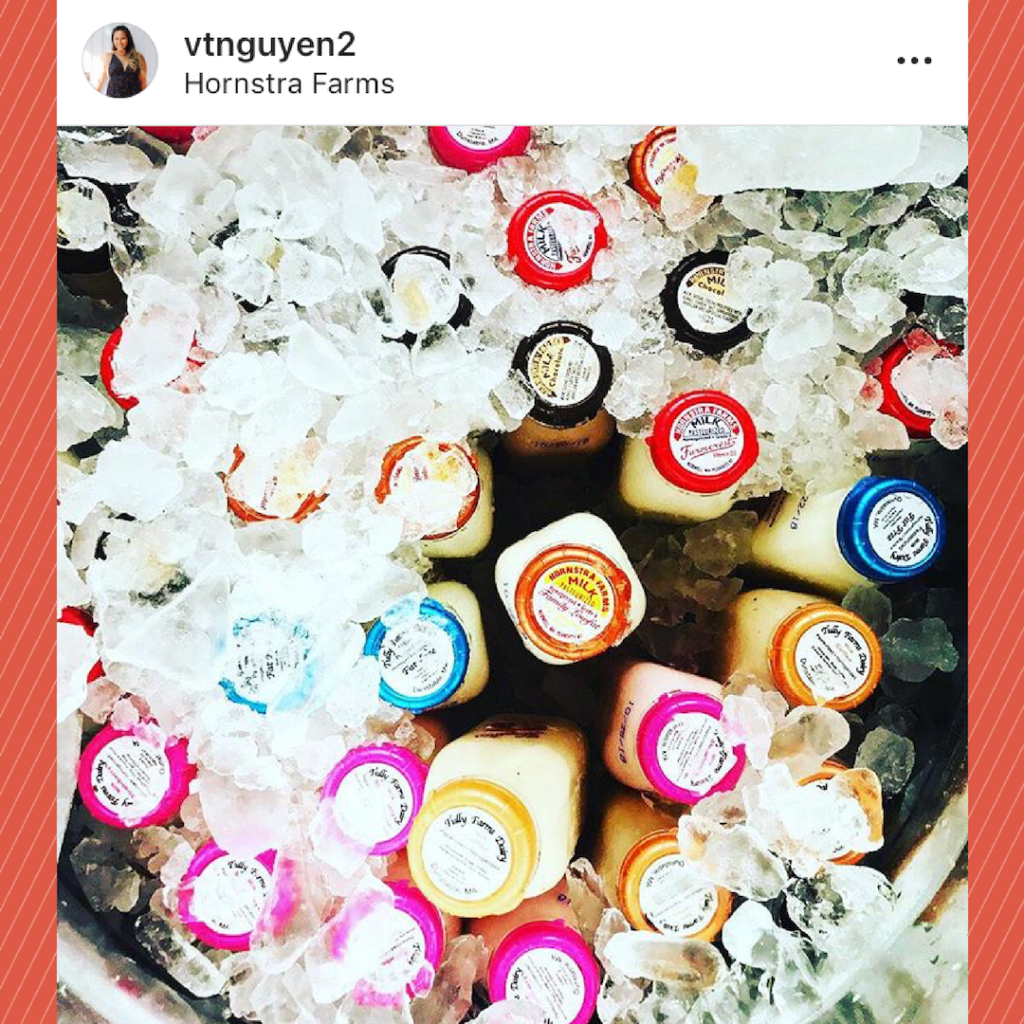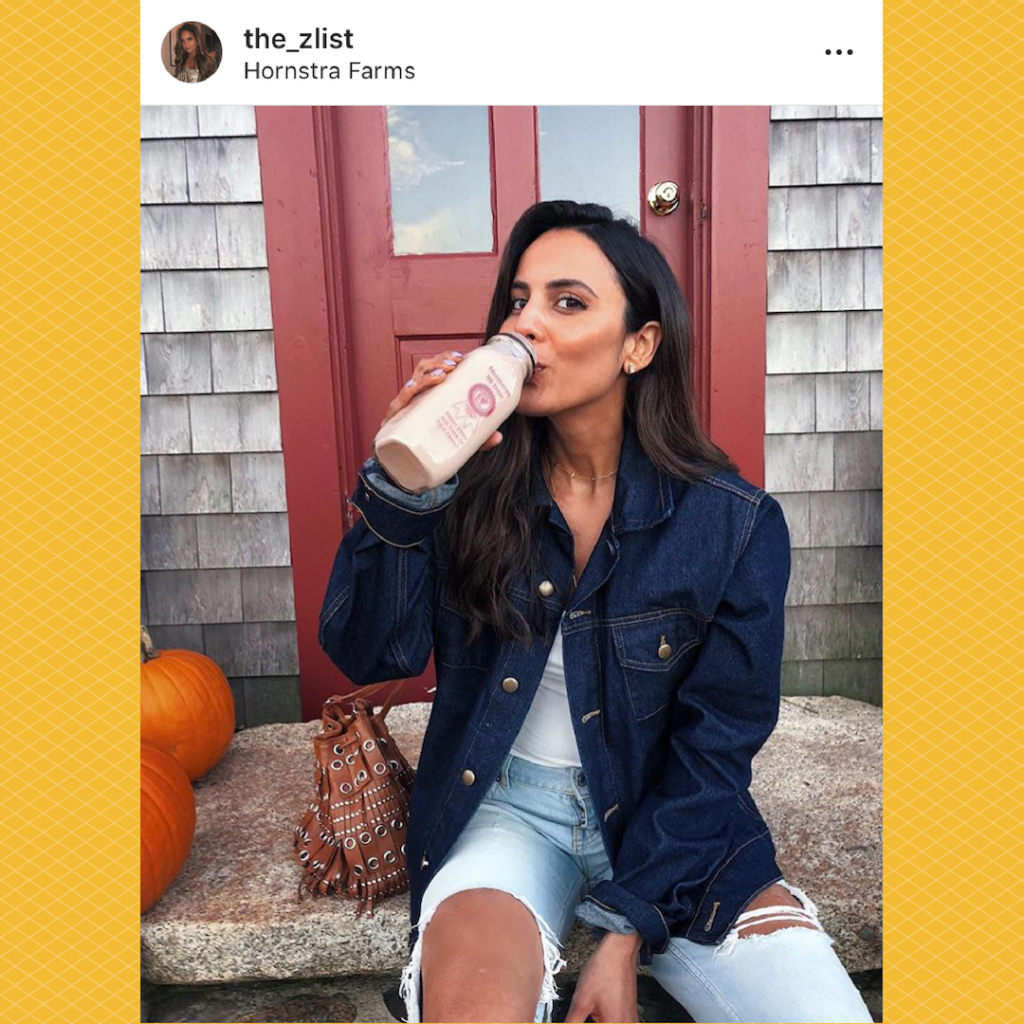If you want to create a special experience for a small group of people – a farm-to-table dinner can be an intimate way to bring your friends, family, and community members together over what connects us – food and farms!
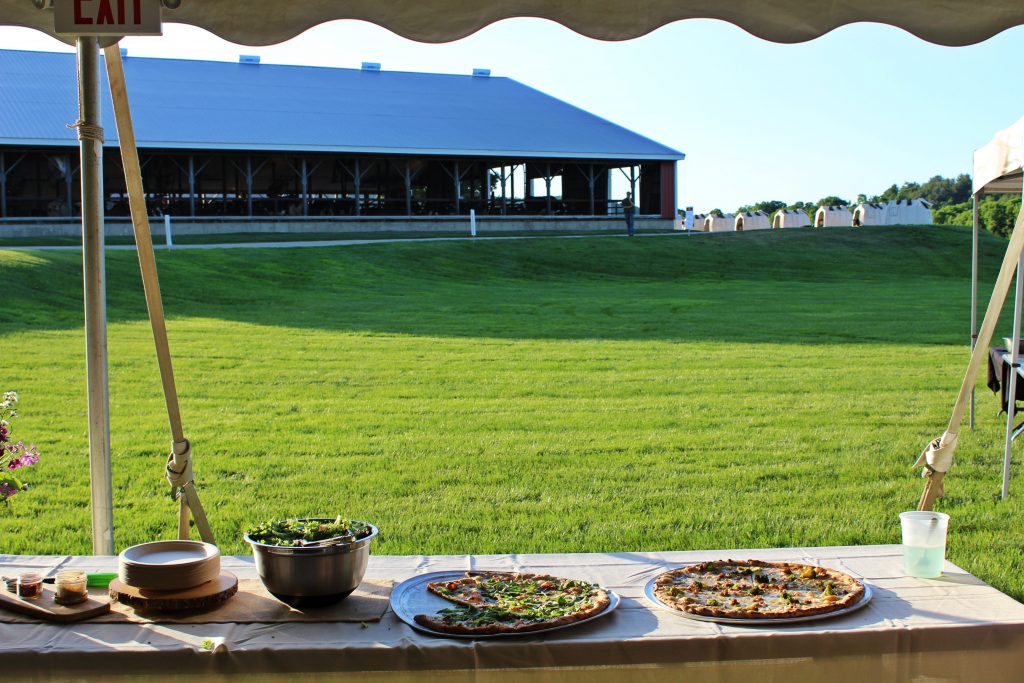
Over the past two years, we’ve hosted several farm-to-table dinners in Burlington, VT and Boston, MA –for moms who follow the City Moms Blog and dietitians as well. The dinners were for groups of about 50 people.
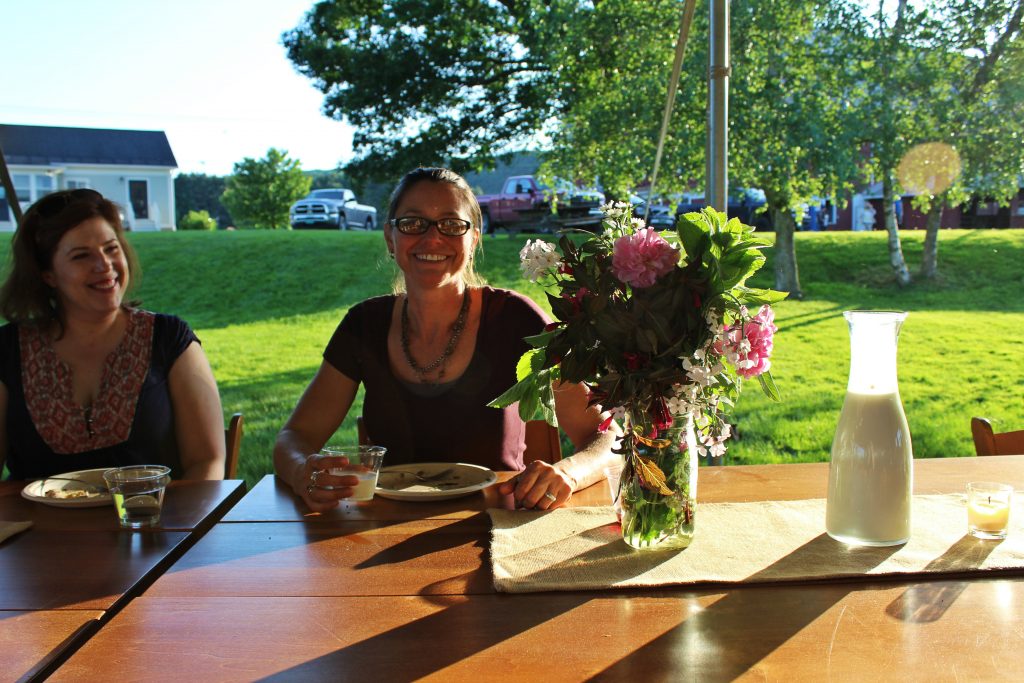
They were looking for a night out with their friends in a special place where they could leave their busy lives for a moment and connect to the natural world – the farm. It was our job to make them feel relaxed, nourished, and appreciative of the way their food was made, from farm to fork.
VIDEO: Farm-to-table dinner attendees share about their experience
It’s possible to do all of this on a budget. Here are our top tips for how you can do it too:
1) Find a local farm & incorporate the farmer
We are fortunate in New England to have over 1,000 dairy farms. Many are open to the public and allow events on their farm for a reasonable fee. If you aren’t sure what farms are near you and open for events, you can contact us for help. You can also consider other types of farms like vegetable, fruit or sheep.

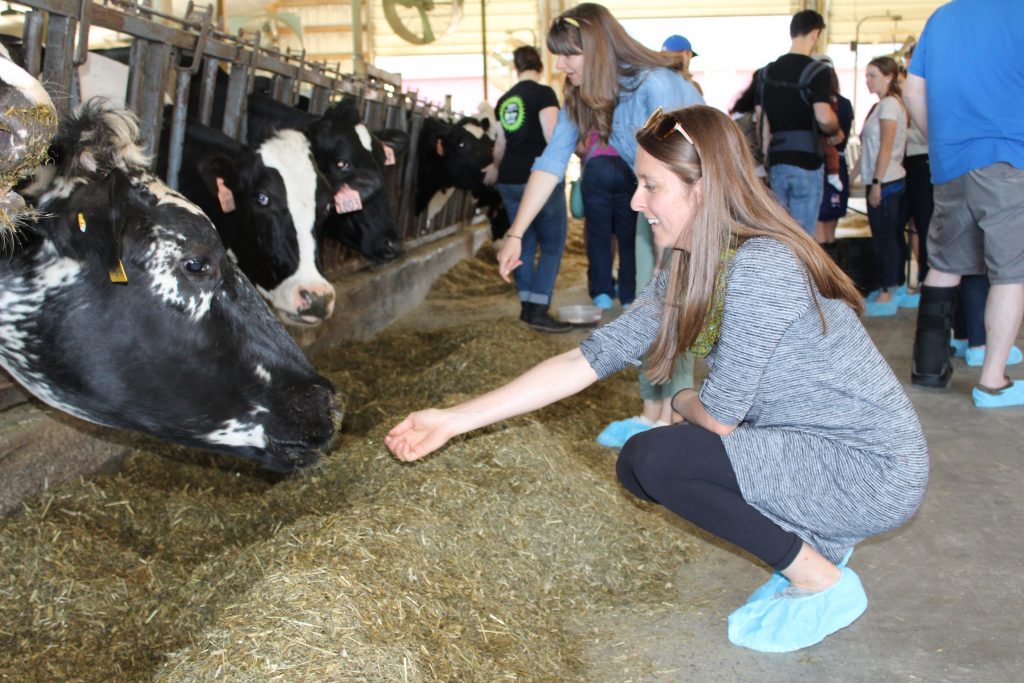
It’s important to incorporate the farmer and the farm experience into the evening. Before dinner, you will want to set up a simple tour through the farm with the farmer. It can be helpful to set up a small table at two or three areas throughout the farm where people can stop to pick up a snack, like cheese sticks if you’re on a dairy farm. On the table, the farmer may also have fun things they would like to display, like examples of ingredients in the food that the cows eat.
Ask the farmer in advance if he or she would like to say a few words to the group as they sit down for dinner. It’s not often that people are able to talk with the person who made their food in the place that it’s made – and that’s a special connection they won’t forget. For many people who come with concerns, a chat with a farmer helps them to feel understood and they often leave the conversation with a new perspective and an appreciation for farming.
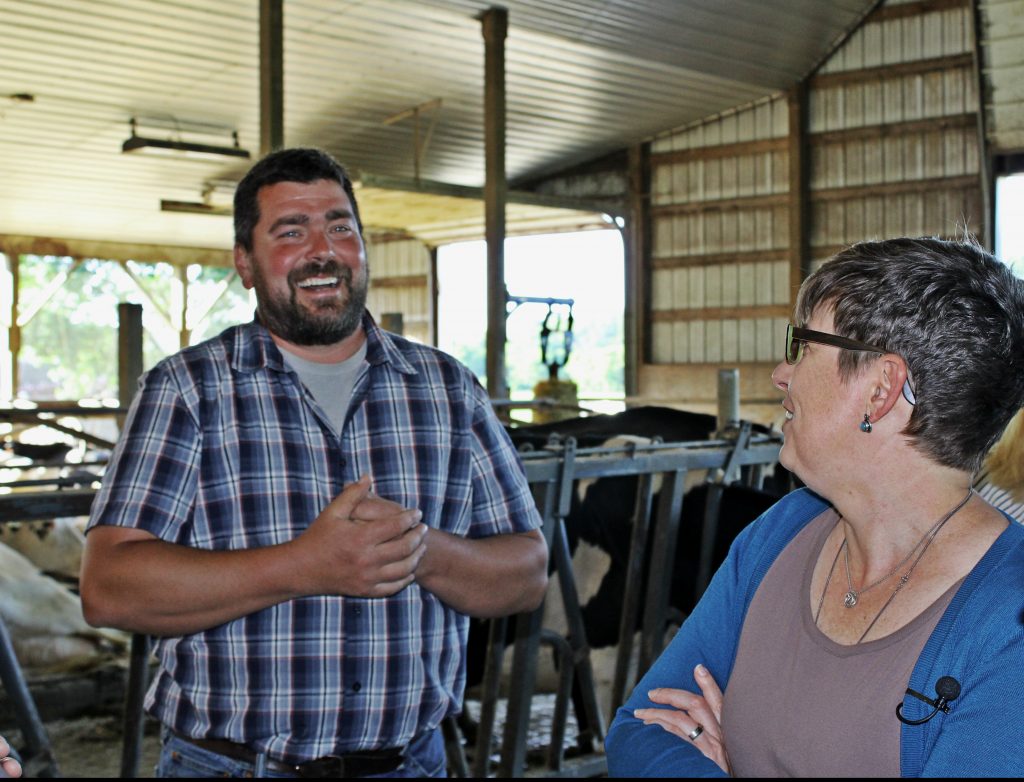
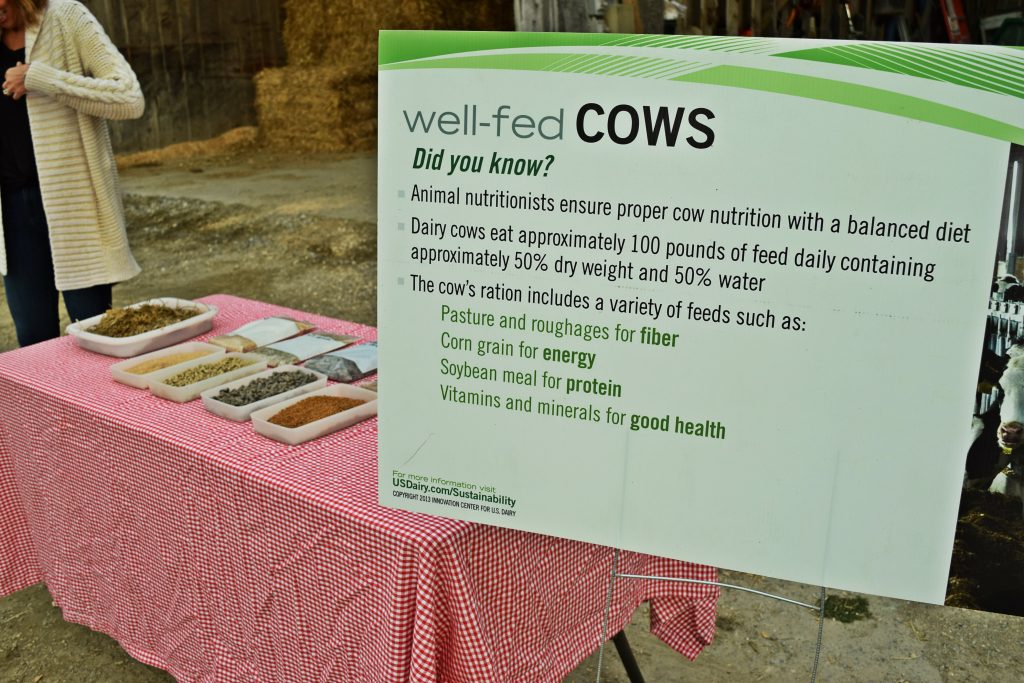

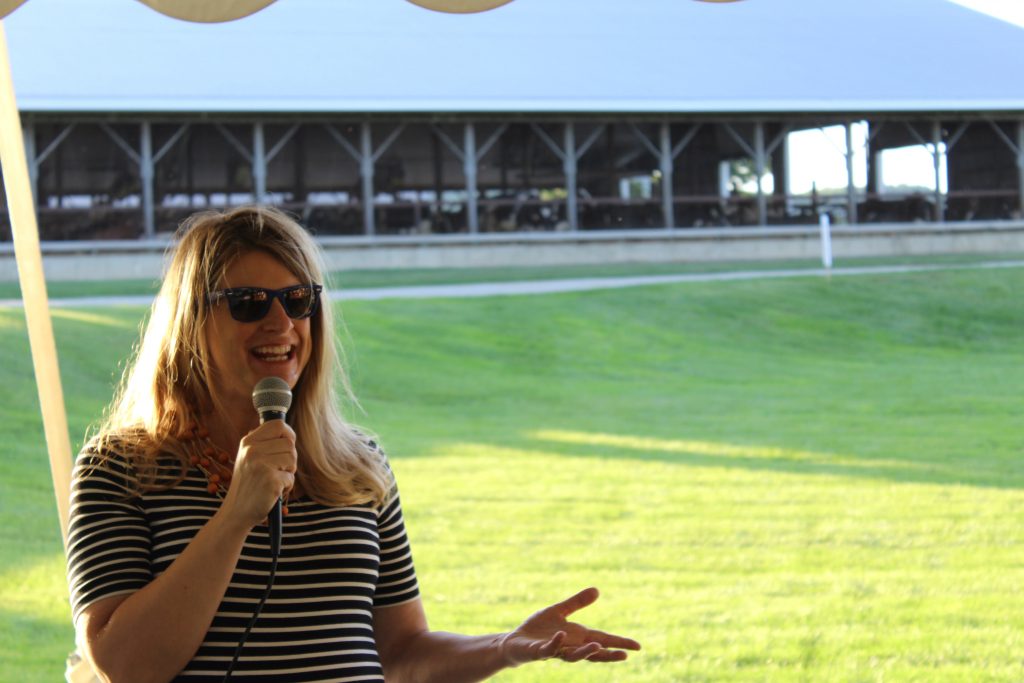
VIDEO: Dairy farmer Ransom Conant shares about his experience hosting people at his farm.
2) Keep it simple
It can be tempting to go over the top with a farm-to-table dinner, but you don’t have to go nuts with ornate place settings and expensive touches if it’s not in your budget. People will appreciate the nature and beauty around them more than the table cloths. Here’s how to do that:
–You don’t need to have a lot of courses. Here is a menu we used: local cheese & fruit tray, simple salad made with local veggies, pizza made with cheese from the farm, and local ice cream sundae bar for dessert!
-Use long banquet tables for family style seating. This is great because it creates a family feel, and you can seat more people with less tables.
-Find vintage, funky plates at yard sales. The plates we used at a dinner at Farr Farms in Richmond, VT were beautiful hand-me-down mismatched china plates.
–Buy used or borrow table décor. You can often find great farm-to-table décor among friends or for sale after a wedding: mason jars for vases, burlap table runners, chalkboard signs for the menu. Mason jars are also great as drinking glasses.
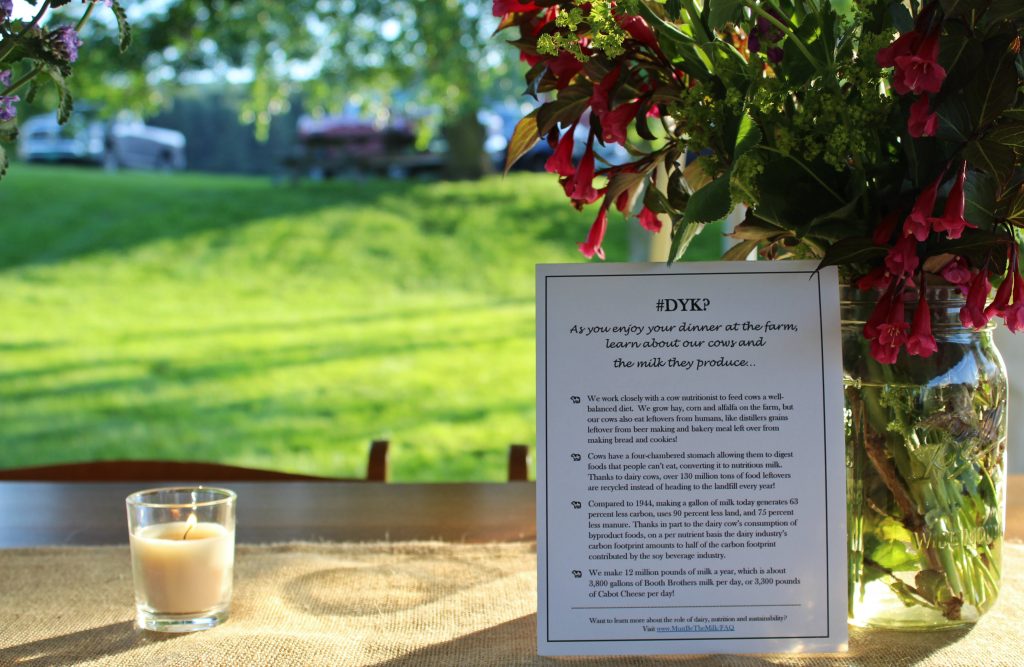
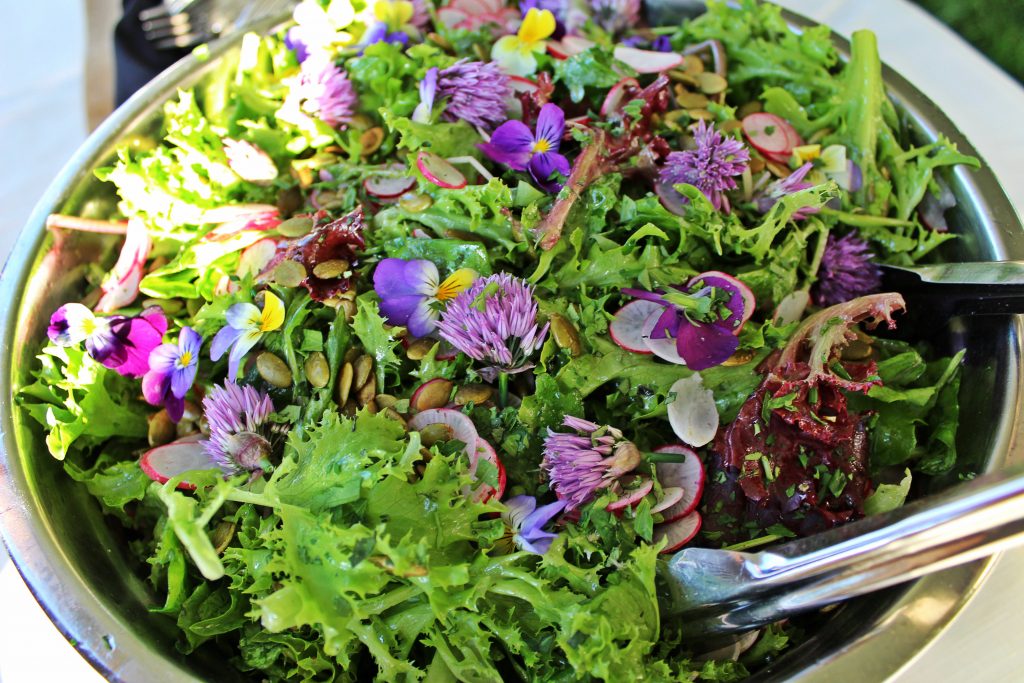
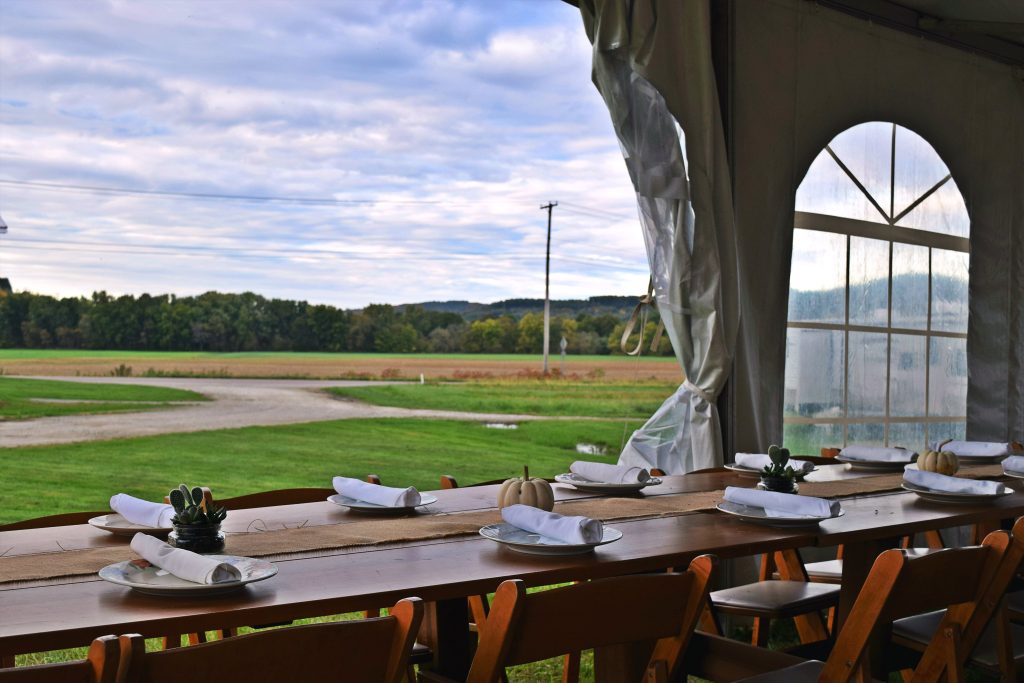
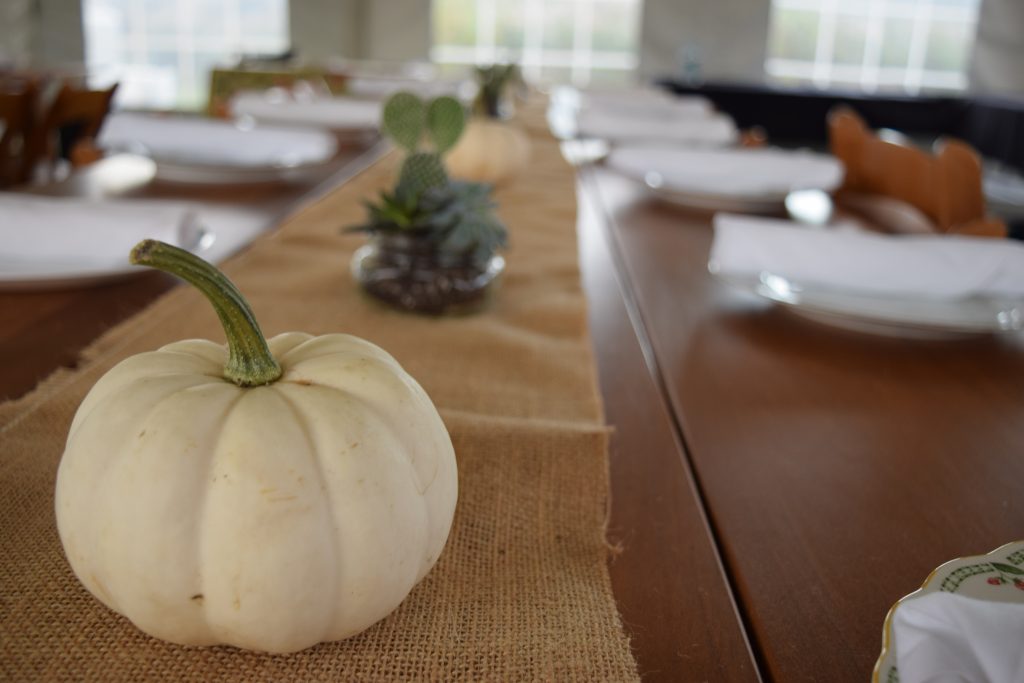
–String white lights over your table. If you can place the table under a tree and string lights above – perfect! If the farmer has a barn or you are renting a tent you can do the same.
-Arrangements don’t have to be flowers. Instead of buying flowers, consider mini-pumpkins, succulents, herbs, or simple wildflowers that are growing on the farm or in your garden. If it’s later in the year, you can use dried corn stalks as decorations.
-Discuss the insurance and alcohol policy with the farm. Safety of the guests always comes first. Special event insurance is an option – these are usually inexpensive policies and provide peace of mind.
-Keep it simple, but don’t forget the details. Make sure you create a check-list with all of your to-do’s. In addition to the food, beverage and décor you will need to consider: a parking plan, fans if it will be hot, heaters if it will be cold, trash/recycling, bathroom access, gift bags, table cards with information you want people to know about the farm, and a power source for lights and for playing music.
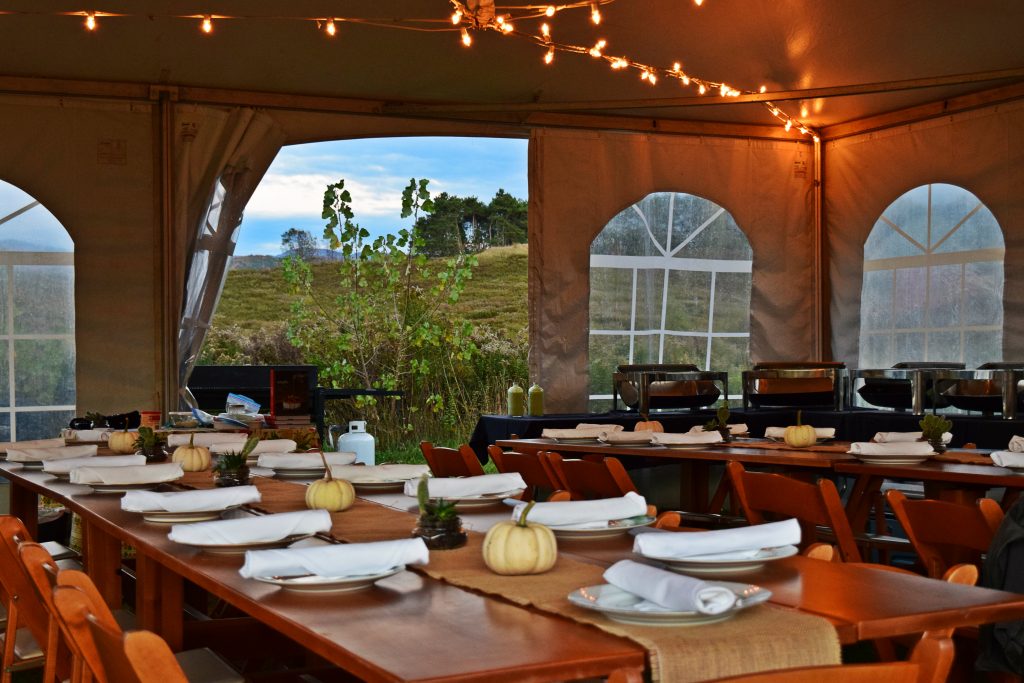
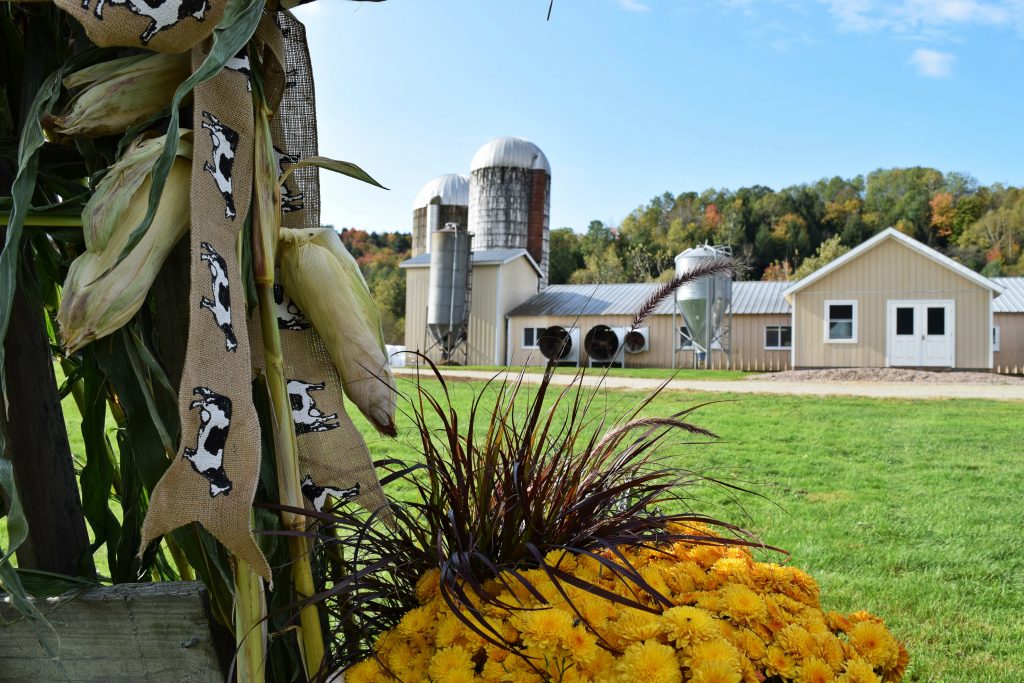
3) Use the farm products in creative ways
Find out what products the farm makes and incorporate them into your farm-to-table dinner either yourself or with a local chef or culinary group that will be preparing your meal. For example, at our dinner at Conant’s Riverside Farms in Richmond, VT we knew that the farm provided milk to Cabot Creamery Cooperative for cheese and so we served a Cabot cheese fruit tray appetizer, and freshly-made brick oven pizza from Wood Belly Pizza.
We hosted a dinner at Hornstra Farms, in Norwell MA where they bottle their own milk and make their own ice cream! We served fresh glass-bottled milk and ice cream sundaes for dessert.
At Farr Farms, milk is sent to the cooperative Dairy Farmers of America, and is used for Garelick Dairy Pure milk and Green Mountain Creamery yogurt. Both great options we provided to our guests.
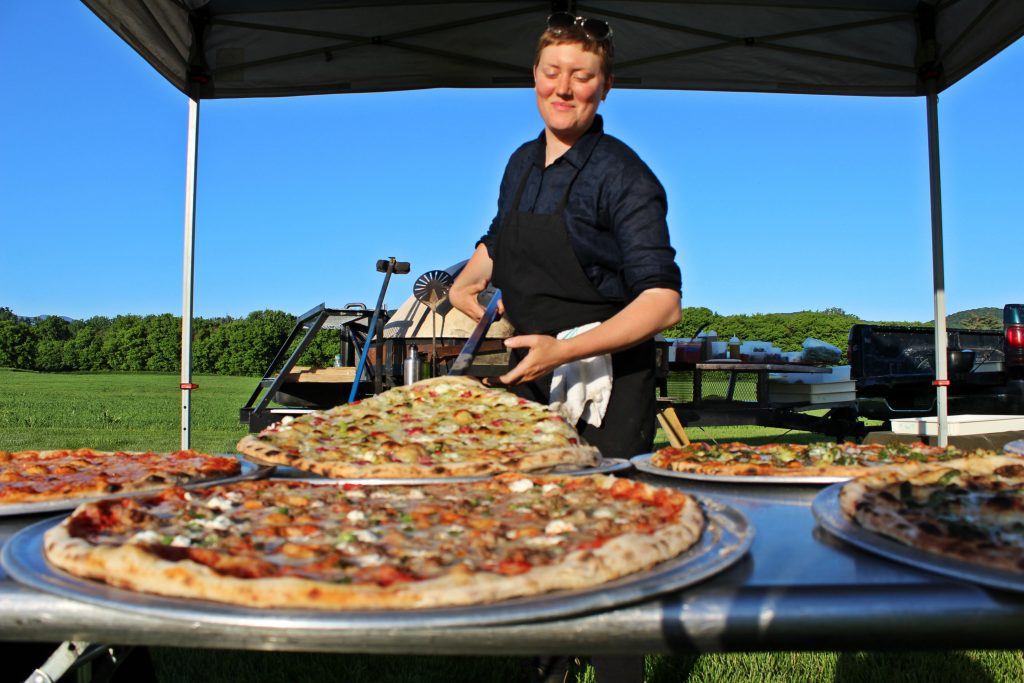
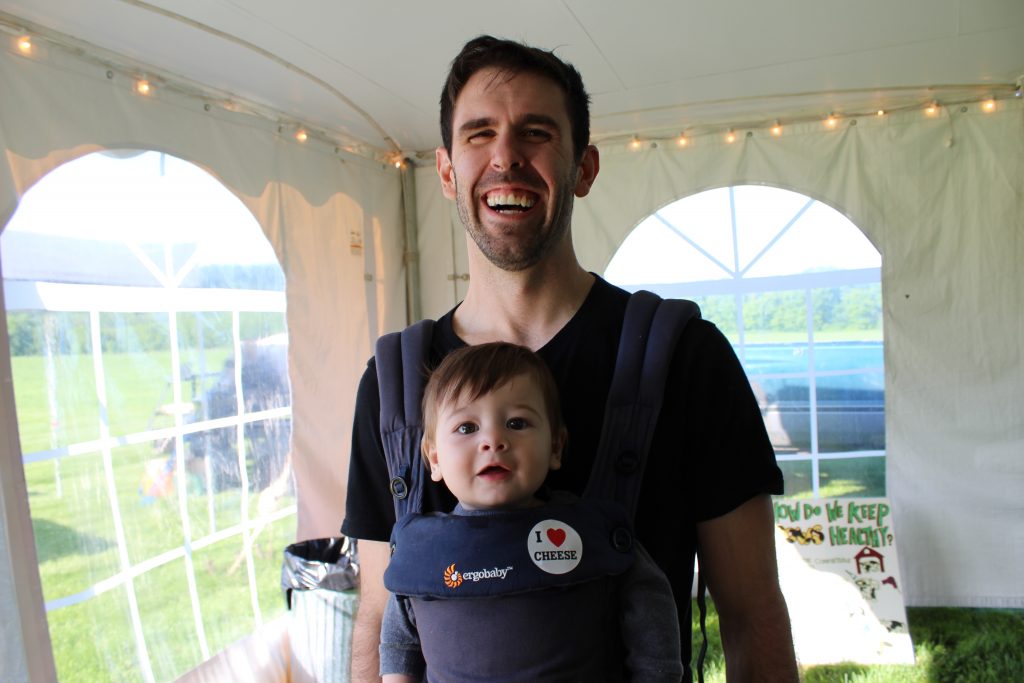
Start small
If it’s your first farm-to-table dinner, keep it small. A gathering of a dozen people can be just as impactful as a large event, if not more. Your guests will have more of an opportunity to talk one-on-one the farmer who helped produce their food. It’s a farm-to-table experience they won’t soon forget!
